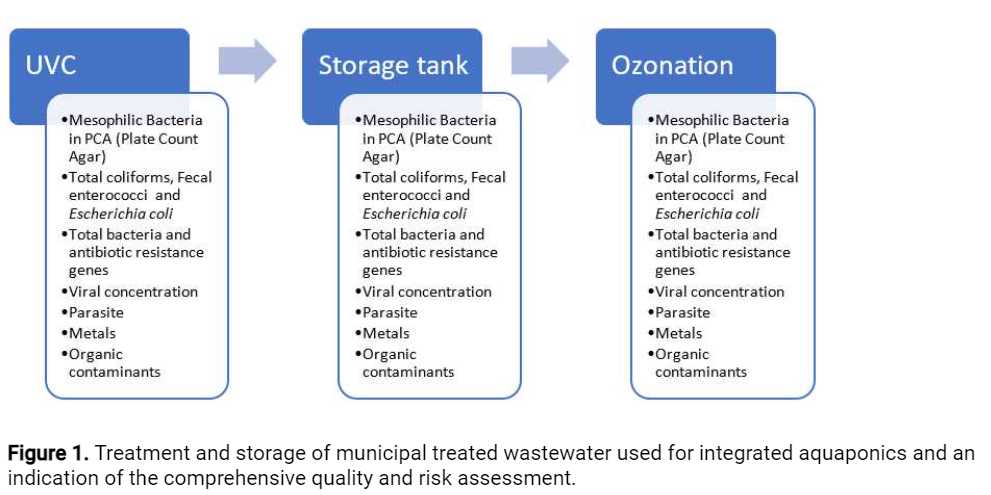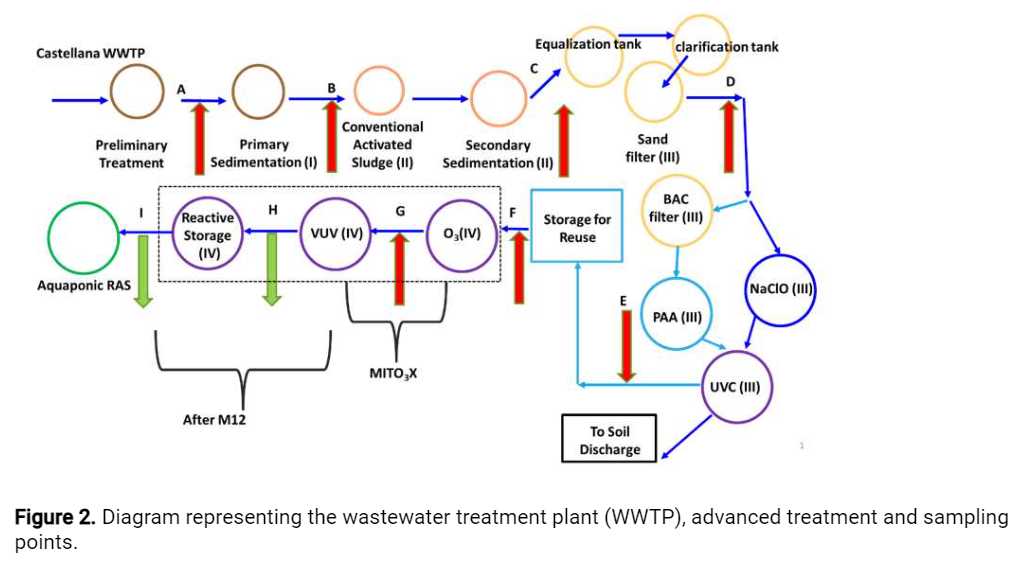WATER PRODUCTION FOR AWARE (Metals)
Antonio Cobelo
water sampling
water processing
water analysis
waste water treatment
advanced tertiary treatment SOP
Abstract
The protocol summarises the procedures used for analytical control. The protocol describes the Standard Operating Procedure (SOP) for the optimization of advanced tertiary treatment of water, based on a comprehensive quality and risk assessment.
Steps
Metals
The water production for AWARE main activities includes three stages – disinfection by ultraviolet C radiation (UVC), storage for12h 0m 0s-24h 0m 0s(according to water load and season) and ozonation. The water quality is monitored at these three stages, for the parameters indicated in Figure 1 below.

Sampling, Processing, and Analyses
Water samples are collected (see Figure 2) and processed within a6h 0m 0sinterval, before being shipped for the partner responsible for the analyses (Table 1). In case no processing is needed, samples are frozen and stored at-80°Cwithin3h 0m 0s.
For each sampling event, the date, day of the week and hour; the temperature and rain. Sampling points, indicated in Figure 2 were designated from A to I:
-
Influent of primary treatment (A)
-
Influent of biological treatment (activated sludge) (B)
-
Treated secondary effluent (C)
-
Sand filter effluent (D)
-
UVC effluent (E)
-
Storage for reuse tank effluent (F)
-
Ozonation effluent (1 dose, e.g.,
5mgO3) - MITO3X technology - (G) -
Effluent of the vacuum UV oxidation (VUV) (H)
-
Effluent of reactive storage / Influent of the recirculation aquaculture system (RAS) (I)

Methods: The section below summarises the procedures used for analytical control – detailed protocols are annexed to this protocol.
Metals: Metals:
Analysis: Detection and quantification of metals
Method: Acidified water samples were analyzed for several metals (e.g. Al, Cu, Ni, Co, Pb, Zn, Cd, Pt, Sb, Sn, U, As, Ag, Hg, REEs) by means of ICP-MS (7900 Agilent) using matrix-matched external calibration.
Observations: Samples were filtered/centrifuged within12h 0m 0safter collection, and then acidified to 0.15M HNO3.
Parameters framed by Legal and Regulatory Requirements:
Using the EU Drinking Water Directive:
Metals - DIRECTIVE 2008/105/EC OF THE EUROPEAN PARLIAMENT AND OF THE COUNCIL of 16 December 2008 on environmental quality standards in the field of water policy

